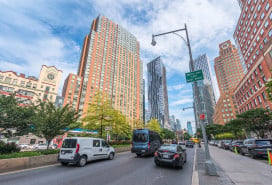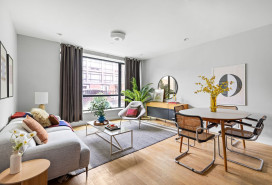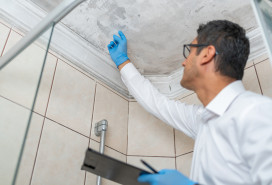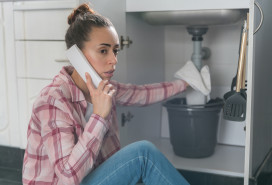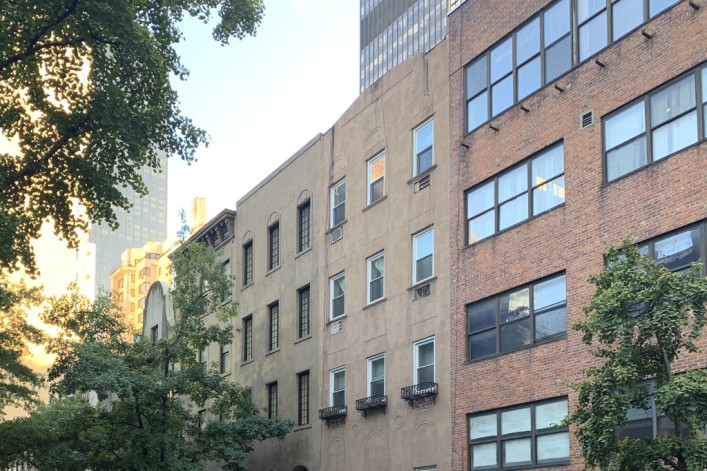What I learned from 150 apartments before I finally bought one
Finding that perfect piece of Manhattan real estate is no small feat.
When my husband and I relocated from Atlanta a few years ago, we thought the rental process was challenging. At that time, we had no idea what buying an apartment involved. We’d owned real estate before—how much different could it be?
We realized via our first agent (and there would be three), that the real estate rules in Manhattan are nothing like those in other cities.
By the time we got to the third agent and had viewed apartment number 75, we knew we were better off working alone. I was far too picky, and no agent in his or her right mind was patient enough to put up with me.
However, if you are not obsessive, demanding, and unreasonable (like me), I do recommend working with an agent.
We did our homework every weekend, visited one open house after another, and we learned the ins and outs quickly.
More than 150 apartments later, we considered ourselves well-educated potential buyers. And finally, after about a year, we succumbed to the inevitable—paying around $700k for an 825-square-foot one-bedroom co-op in a full-service pre-war building on the Upper West Side that we absolutely love.
We have a large mortgage and a low-ish monthly maintenance that started at $800 and is now over $1,100. (Note, we spent our life savings on the downpayment and paid off all of our debt during our year-long search so that we'd be eligible for a mortgage.)
During this time-consuming process, my husband and I learned enough to write a book about NYC real estate, but for now, I'll stick to a post.
Here are some of my personal tips to help you find THE ONE.
1. Buy where you want to live, not where you work. Don’t base your neighborhood choices on the location of your job. Jobs in New York can change as frequently as the weather. I’m glad that I listened to my gut and didn’t search only in areas convenient to my job in Midtown East. I broke up with the job, but my one-bedroom is still in my life.
2. Make a short list of favorites and return to the apartments again and again. Visit during the day, at night, mid-week and on the weekend. Pay attention to bright lights glaring into the unit from other buildings, as well as strange noises, odors, or people coming and going. You’ll be buying those annoyances too.
Purchase the apartment that you’ve seen a minimum of three times and you love more each time.
3. Consider walk-ups, but be realistic. Walkup apartments may have a lower sales price, but they may not suit your lifestyle.
Traipsing up and down several hundred steps per day to reach a high-floor walkup builds calf muscles but isn’t an option if you have an elderly parent or grandparent who visits.
It also isn’t advised if you’re forgetful. Leave your cell phone behind? Be prepared to climb the 99 steps again, be out of breath and late for the office.
4. Just because a celebrity lived there, doesn't mean you'll want to. We looked at an East Village tenement that was once the home of Beat generation icon Allen Ginsberg. We nearly walked past the building because it looked condemned.
Afraid of what we’d find inside, we ventured up the crumbling stairs to the ground floor and walked in to what appeared to be a scene from "Taxi Driver."
We trudged to the fifth floor of the nasty co-op, taking note of each detail like any other apartment we’d visited. None of the doors matched. Some were wood; some were metal. Each one had the apartment numbers scribbled, painted, or engraved----but definitely not in gold.
The real estate agent assured us the renovation hadn’t been completed. Really?
Out of breath, we reached the top floor only to find a maze of dirty, cluttered rooms, one leading into the other, with an illogical floor plan. We walked through, looked at each other, and left. That one didn’t make it to the short list.
5. Always inspect the basement of the building. Request to walk through the basement if you are considering an apartment. If you notice rat droppings, clutter in dark corners, smell trash or some other funk---RUN---don’t walk. If the basement’s not clean, neither is the rest of the building.
6. Talk to everyone. Talk to the doorman, the super, the residents, and anyone else you can find who would know any inside dirt. You’ll get a feel for the attitude, energy, and unmentioned quirks or rules of the building. One of the neighbors in our building had said Julio (our super) keeps the place spotless and that we’d be able to “eat off the floors.” And it’s completely true.
Keep in mind that Melrose Place Manhattan exists ----you want to avoid it for yourself and for resale. An odd (and now deceased) next door neighbor in our rental building was certainly a nuisance, but in a co-op, he could have affected our resale.
7. Buy the sponsor unit if possible. If you’re considering buying a co-op, the interview is the most stressful step. Buying a sponsor unit allows you to avoid the co-op board. If you even have to meet with the sponsor (usually you just deal with their brokers), it's easier to meet with one crazy person than meeting with an entire board of them.
In our case, the biggest issue vis-a-vis the 80-year-old sponsor was not our three pets, it was the fact that I wasn’t Jewish. But after an hour-long flirtatious conversation and a few smiles and winks, my shiksa status didn’t seem to matter.
Another bonus of buying the sponsor unit: Some of the normal rules don't apply, so we're one of only several residents who have a washer-dryer in their apartment.
A downside of sponsor units is that as longtime rental units they tend to be in need of renovation or have undergone a quick/cheapie renovation that lasts about as long as a band-aid. In our case we got lucky, since the kitchen had been renovated and the bathroom was semi-renovated. We just had to make a few construction and cosmetic edits.
8. Be reasonable, tenacious and don’t settle. Be practical with your wish list. You won’t find a sprawling two-bedroom with a doorman for $400K in Manhattan.
But no matter how frustrated you get with the search, don’t settle for a property that you know you’ll like less after six months. Buying is (at least semi-)permanent. You’ll have buyers’ remorse and regret it later. If you're not sure, rent a little longer, revise that wish list, and continue your search with a fresh approach.
9. Buy location. You can renovate the apartment or make improvements, but you can’t change the location. I recommend purchasing close to public transit, and in a convenient neighborhood.
Schlepping fifteen minutes to the subway or grocery store may seem fine in April and May, but on the most humid days in August or the chilliest days in February, you’ll hate it. There’s nothing worse than arriving for work schvitzed through your blouse, or frostbitten and unable to type.
10. Take a weekend off. Get your nails done; go to dinner, a movie, or both. Forget about finding an apartment for 48 hours--the search may seem narrower and options may be more obvious. You’ll have a clear head once the New York real estate fog has been lifted. You could be just one step away from finding the almost perfect apartment.
Related posts:
17 tips for casing the joint, from an open house addict
Is a liberal or strict co-op a better investment?
How to find an apartment without bed bugs
A NYC real-estate lawyer reveals the top 14 surprises for first-time buyers (sponsored)
17 questions to ask before buying a NYC apartment
Is "fright capital" killing your shot at a fancy condo?



